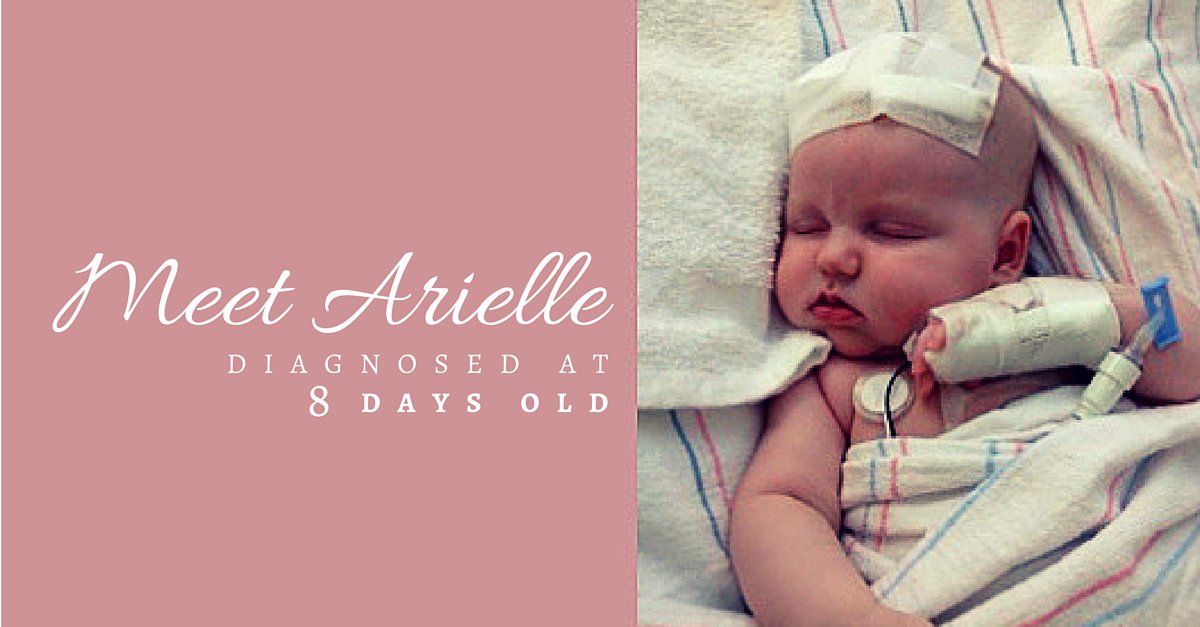“We were stunned when the chief pediatric oncologist told us that her chances of survival were zero.
No hope of survival.”
My daughter, Arielle, was born in 2013 with no complications.
One week later, I fell down the stairs while holding her, prompting a trip to the emergency room. The exam led to the incidental discovery of an aggressive brain tumor, and the next day we were stunned when the chief pediatric oncology told us that her chances of survival were zero.
No hope of survival.
She was eight days old.
My husband and I couldn't give up without giving her a chance, and we opted to have the tumor biopsied. The bewildering results could not be interpreted, even by the leading expert at the Johns Hopkins Division of Brain Tumor Research. We transferred our daughter's care to Dana Farber, where the neurosurgeons extracted nearly all of the tumor, and identified it as an exceedingly rare tumor called a congenital intracranial teratoma. These tumors arise from a single germ cell that grows into the disorganized components of an embryo, and they are described in medical literature as universally fatal in newborns.
Since there is no treatment protocol for such a disease, a world-renowned teratoma specialist from Chicago was consulted, and he presented her case at an international convention in London.
My daughter survived six brain surgeries, a tumor relapse, and a host of secondary morbidities including diabetes insipidus, seizures, hydrocephalus, and left sided weakness.
Thankfully, these issues were temporary.
* * *
UPDATE:
“Arielle just had a clear scan, and all is well,” Elizabeth wrote to us in May 2019. There are very few known survivors of this type of teratoma, and Arielle may be the only one without significant long-term effects from treatment.
“She continues to amaze us with her upbeat attitude and perpetual smile,” says Elizabeth about her daughter, who is about to finish kindergarten. “She recently learned all 50 states in alphabetical order completely on her own, for fun. We’re so proud of her.”


